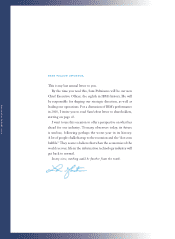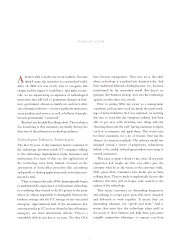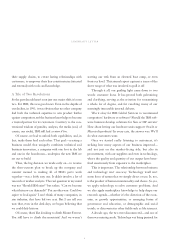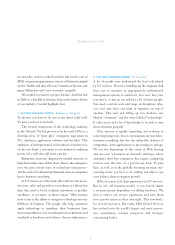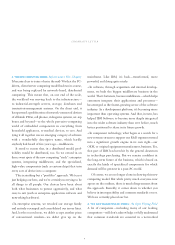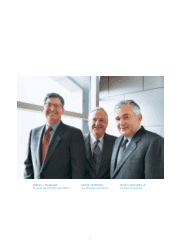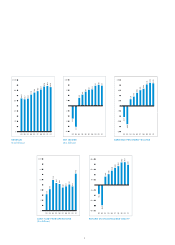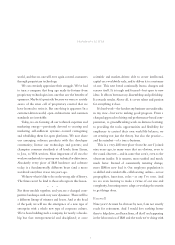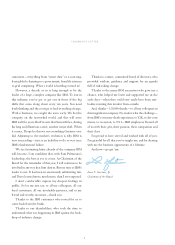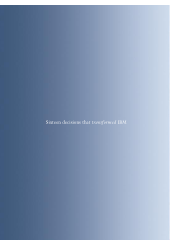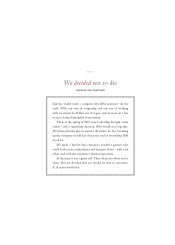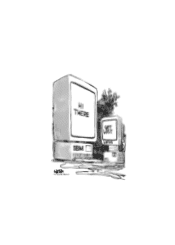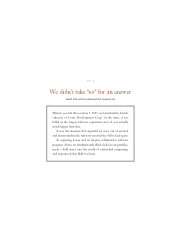IBM 2001 Annual Report Download - page 9
Download and view the complete annual report
Please find page 9 of the 2001 IBM annual report below. You can navigate through the pages in the report by either clicking on the pages listed below, or by using the keyword search tool below to find specific information within the annual report.7
world, and that no one will ever again control customers
through proprietary technology.
We can certainly appreciate their struggle. We’ve had
to turn a company that long ago made its fortune from
proprietary technologies into one that saw the benefits of
openness. Maybe it’s precisely because we were so acutely
aware of the siren call of proprietary control that we
have learned to resist it. But one thing is apparent: In a
customer-driven world, open architectures and common
standards are inevitable.
Today, we are focusing all our technical expertise and
marketing energy— previously devoted to creating and
marketing self-sufficient systems
—
toward reimagining
and rebuilding them for open platforms. We now share
our emerging software products with the developer
community; license our technology and patents; and
champion common standards at all levels, from Linux,
to Java, to Web services. Most important of all was the
work we undertook to open up our technical architectures.
Absolutely every piece of IBM hardware and software
today is a fundamentally different beast (and a more
socialized one) than it was ten years ago.
We know what it’s like to be on the wrong side of history.
The future won’t be kind to those who ignore this lesson.
***
Put these models together, and you see a changed com-
petitive landscape with very new dynamics. There will be
a different lineup of winners and losers. And at the head
of the pack, we will see the emergence of a new type of
enterprise with a whole new type of corporate culture.
We’ve been building such a company for nearly a decade:
big but fast; entrepreneurial and disciplined; at once
scientific and market-driven; able to create intellectual
capital on a worldwide scale, and to deliver it to a customer
of one. This new breed continually learns, changes and
renews itself. It is tough and focused
—
but open to new
ideas. It abhors bureaucracy, dissembling and politicking.
It rewards results. Above all, it covets talent and passion
for everything it does.
It’s hard work
—
the hardest any business can undertake,
in my view
—
but we’re making good progress. From a
changed approach to hiring and performance-based com-
pensation; to groundbreaking work on distance learning;
to providing the tools, opportunities and flexibility for
employees to control their own work/life balance; we
are creating not just the theory, but also the practice
—
and the mindset
—
of a true e-business.
This is a very different place from the one I joined
nine years ago, in many ways that are obvious, even to
the casual observer
—
and in some that aren’t, even to the
observant insider. It is smarter, more unified and much,
much faster. Instead of consistently resisting change,
more IBMers now lead it. Our employee population is
as skilled and comfortable collaborating online
—
across
geographies, functions, roles
—
as any I’ve seen. And
we are even learning to make a virtue of our size and
complexity, becoming more adept at working the matrix
to get things done.
Farewell
Nine years! As must be obvious by now, I am not exactly
ready for retirement. And I would love nothing better
than to help drive, and learn from, all that I see happening
in the laboratories of IBM and the work we’re doing with
chairman’s letter

